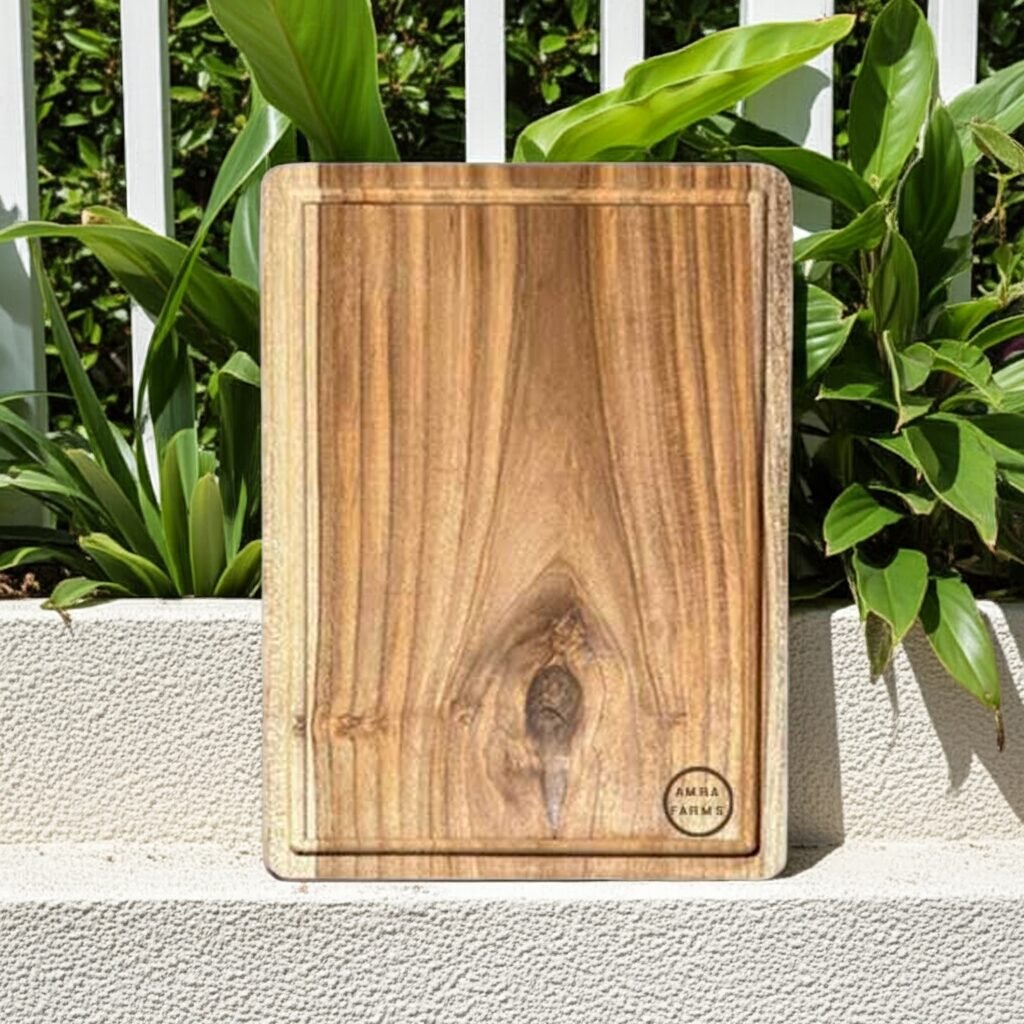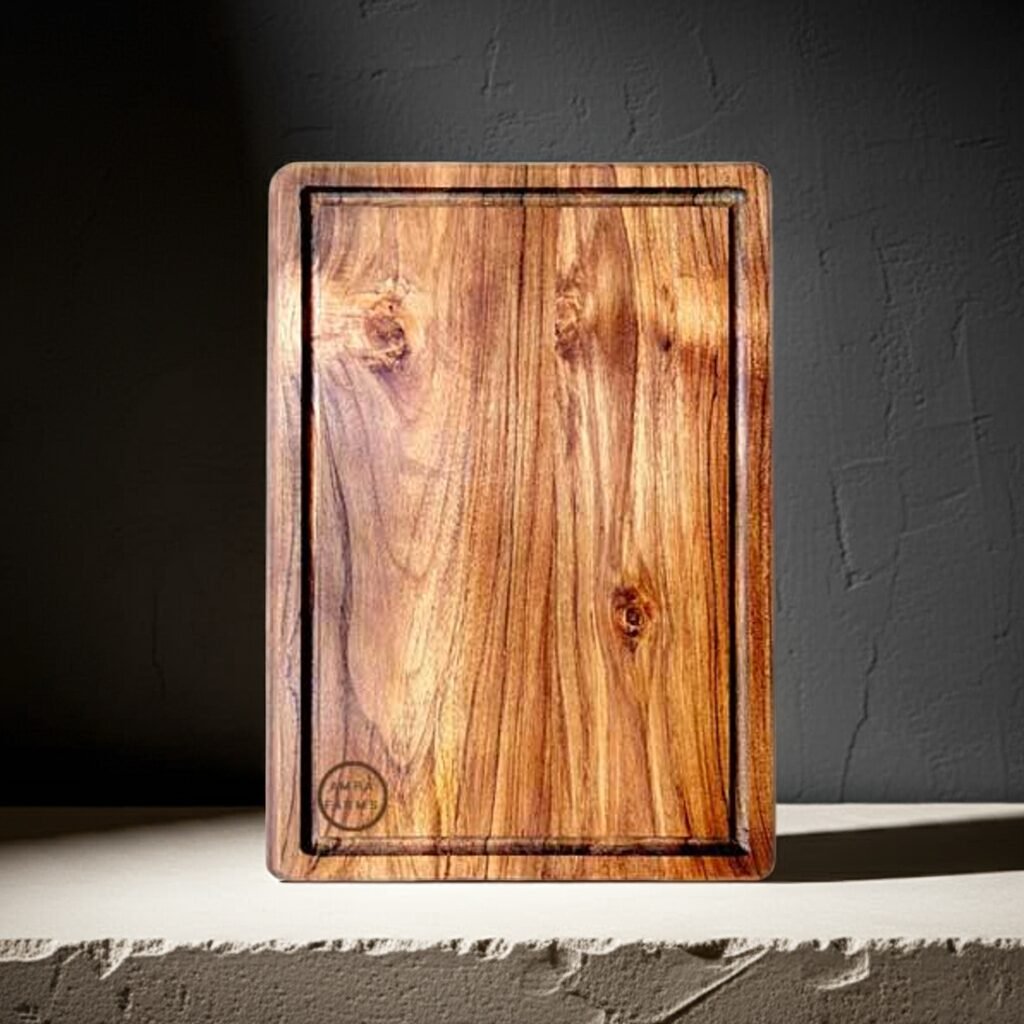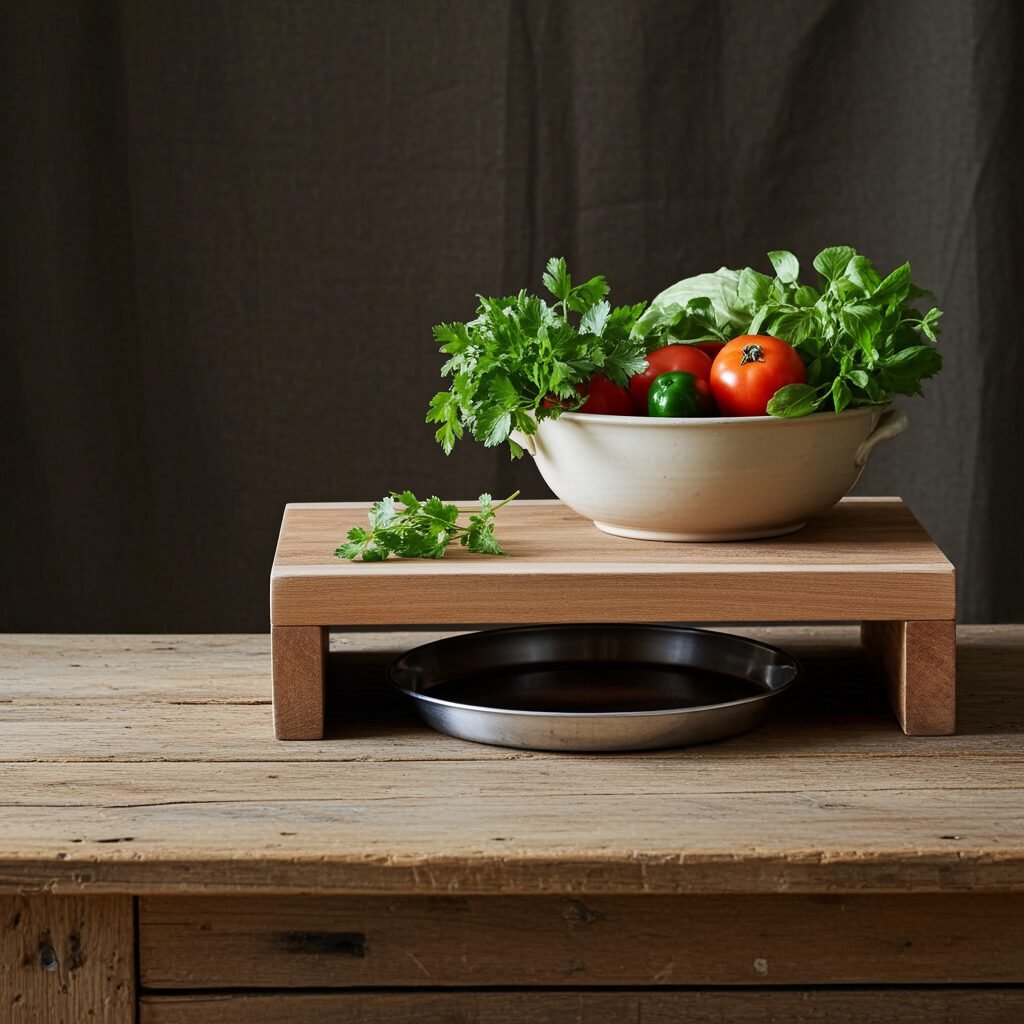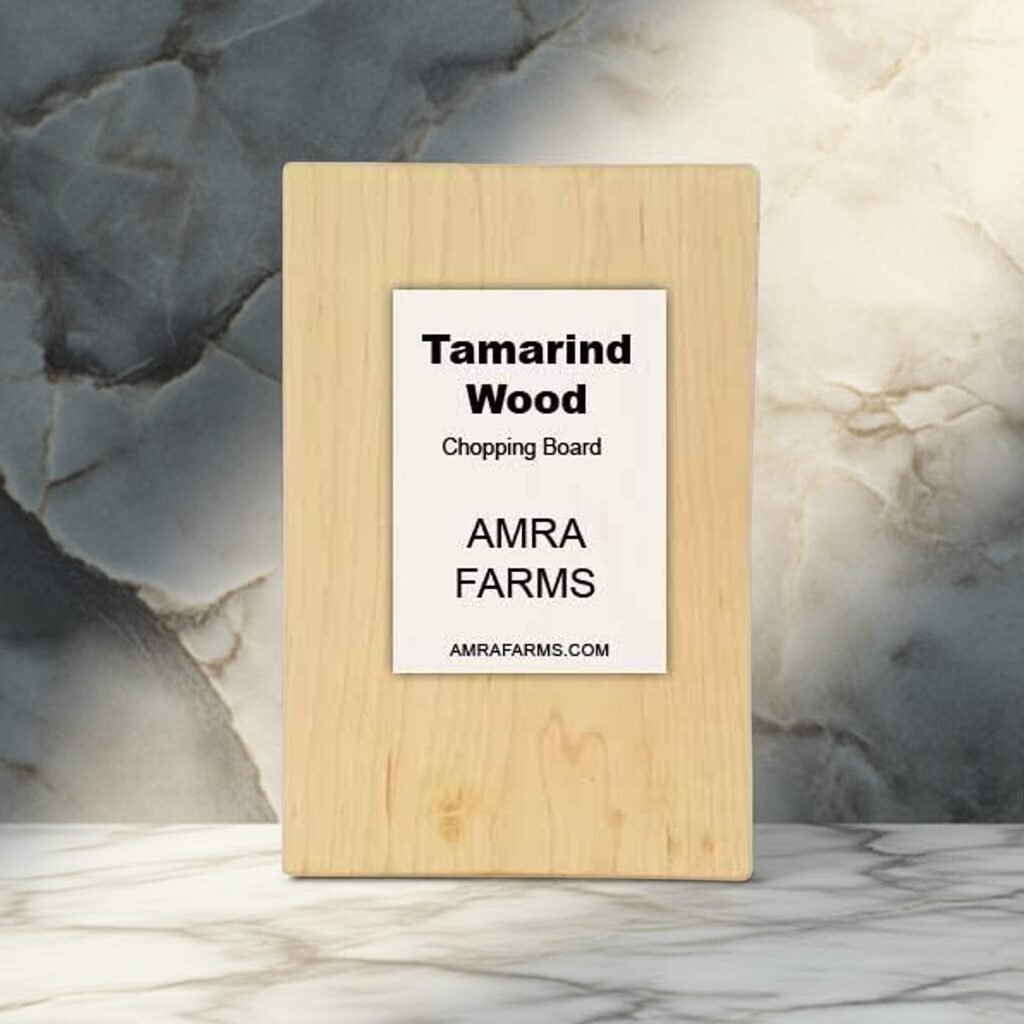Your cart is currently empty!
Wooden chopping boards that naturally resist fungus/mould growth
Purchasing a wooden chopping board goes beyond aesthetics and durability. When considering a chopping board, most of us overlook common factors including toxicity, food safety, and performance. As a home cook, we understand the importance of a chopping board, but when it comes to purchase decisions we end up buying something based on our budget. One of the most overlooked features of wooden chopping boards is maintenance. When we talk about maintenance, we have to talk about mold and fungus. Did you know, more than 30% of all wooden chopping board users don’t want a wooden chopping board because of mold infestations and fungal growth on their board. This need not be the case.






Understanding a good wooden chopping board when it is related to fungal and mold growth requires a good understanding of wood, its composition, density, and strength. In India, you will find chopping boards made from bamboo, teak, neem, tamarind, mango wood, acacia and then comes a long list of “Wooden Chopping Boards” which will never tell you what wood is used. The truth is that many of the woods used in wooden chopping boards are not 100% fungus or mold-free.
Things don’t end there. Fungal growth and mold are also directly related to the area you live in. If you live in places near the coast, where the humidity is extremely high, you have a higher chance of mold and fungal growth as opposed to areas where the weather conditions are dry or cold. Take for instance Gujarat, Rajasthan, or Punjab. Even interior areas of Tamil Nadu, Telangana, Karnataka, and Maharashtra are dry. But if you take the coastal areas of Maharashtra, Karnataka, and Telangana it is humid and moist. This is the same for places like Kerala, parts of Tamil Nadu like Chennai, Kanyakumari, Puducherry, or Goa.
Moist weather conditions promote more fungal and mold. This affects not just your cutting board but your overall home.
When it comes to wood though, there are some woods which are excellent for cutting boards and do relatively well in humid conditions as opposed to dry weather conditions.
#1 Teak wood Cutting Boards:
Teak wood is considered the most antibacterial, antifungal, and mold-resistant wood available in the market. But don’t be fooled. Even teak wood is prone to fungus and mold if you do not take care of your wooden cutting boards. Teak wood is known to have the highest oil content among all Indian woods. It is rich in teak oil which resists fungal growth and mold. With regular use and exposure to water, the oil content will reduce gradually. This is why it is important to oil your wooden chopping boards regularly. Oil is the barrier, preventing your wooden chopping boards from being infected by mold and fungus. It repels moisture and ensures your board is protected from cracks. Oiling the board also ensures a longer life for your wooden boards. Teak wood cutting boards last more than 4 decades if cared for and regularly oiled.
#2 Acacia wood Chopping Boards:
Acacia stands at the second position when it comes to antifungal properties and mold resistance. Acacia has 3% oil content compared to teak wood which has 4–5%. While the difference seems less, this small amount makes a big impact. Acacia wood is tough, dark, and beautiful. It is not water resistant and the fibers are loose as compared to teak wood which is tight and dense. This is the reason why acacia wood has a lesser lifespan compared to teak wood cutting boards. With acacia wood, you need more maintenance than teak, often double the maintenance. Acacia wood is dark and often prevents stains from being visible giving it a slight advantage.
#3 Tamarind wood Chopping Board:
Tamarind is a dense wood and has the highest density in all the woods used for cutting boards. Being dense with tight grains prevents water from penetrating the wood. They are non-porous and naturally resistant to fungi and mold if kept dry. Tamarind wood cutting boards are antimicrobial and antibacterial with compounds that prevent microbial growth. Tamarind wood should be oiled to ensure they are mold resistant. They lack natural oil and regular oiling prevents mold and fungal growth. They are excellent even in moist and humid weather conditions but do extremely well in dry areas. Durable, resistant to cracking, and long-lasting, tamarind wood cutting boards are affordable options for your kitchen.
#4 Hinoki wood Chopping boards:
Hinoki wood is a naturally mold-resistant wood which is known for its aroma. Traditionally used in baths and saunas, Hinoki wood originates from Japan. They are antifungal but soft. They are good to use with expensive knives and keep the knife edges sharp for long ensuring durability for your knives. Compared to other woods, Hinoki is soft and should not be used for chopping dense food.
Other woods that are mold and fungal resistant:
Some of the other woods that make an excellent chopping board and are water-resistant include Hard Maple, Walnut, Cherry, and Beech. These woods are not so common in India but are excellent for fungal and mold-resistant cutting boards.
Woods that are not mold and fungal resistant:
One of the woods to avoid includes mango wood. Mango wood is susceptible to mold and fungal growth. They have loose grains and are low in natural oil content. They are lightweight and good for use in dry areas but should be avoided in humid conditions. They also require regular maintenance which is higher than teak and tamarind wood. Oiling the board weekly is crucial to prevent mold growth.
How to clean your cutting board with mold and prevent them from appearing again:
Wash the board thoroughly with mild soapy water. Do not use a steel scrub though you may be inclined to when you see the fungal and mold on the surface. This damages the surface of the board and makes it dry. Use a mild soap and sponge. If needed, wash twice. There may be spots and stains on the board. We will work on it in the next step.
A board with fungal stains and mold can be cleansed with a lemon and salt scrub. Use coarse salt and scrub the board thoroughly. Ensure you cover both sides and even the edges to give the board a very clean look. You can sprinkle baking soda immediately after you have scrubbed the board thoroughly. Do not rinse the board. Simply add a generous amount of baking soda to the surface and use the lemon to scrub off. The surface of the board should turn foamy during this process and bubbles form.
Rinse the board thoroughly after a minute. You should see a neat board unless it is very heavily affected. In that case, you may need to use a 120-grit sandpaper followed by a 320-grit sandpaper to sand your board. This may take time. Sand your board after it is thoroughly dry. Once dry, sand it first with a 120-grit paper along the grains and follow up with a 320-grit for a smooth finish. Once done, oil the board thoroughly.
If you want to prevent mold from coming up again, ensure your boards are washed immediately after use and dried with a dry towel. Leave the board upright and ensure you oil the board at least once a week and if needed more.
The best oils for wooden cutting boards to prevent mold and fungal growth:
When it comes to oiling a wooden board you should choose your oils wisely. One of the most commonly available oils includes coconut oil and other vegetable oils. Most of these oils are not suitable for oiling your cutting board. Oils that are pungent and leave a taste should be avoided completely. This includes mustard oil and regular coconut oil. We recommend fractionated coconut oil but that’s not the only option.
- Tung oil: Not widely available in small quantities. Tung oil is one of the best natural seed oils to prevent fungal growth in wood. It forms a water-resistant film that inhibits fungal colonization. This is considered the most effective, eco-friendly natural oil for wooden chopping boards which is food safe.
- Linseed oil: Linseed oil provides antifungal protection by creating a patina over the wood preventing moisture absorption. It is less potent than tung oil and is often combined with tung oil for better efficacy against fungus and mold.
- Soybean oil: Used for regular cooking, soybean oil is considered a safe alternative and is fungal resistant.
- Coconut oil: While fractionated coconut oil is recommended, regular coconut oil does the job too. Coconut oil is antibacterial, safe, and a natural alternative, which is readily available off the shelf in most stores in India. Ensure you use a food-safe oil.
- Mineral oil: This is not a natural oil but is good for preventing fungus and mold in chopping boards. They also prevent the board from drying and cracking.
- Beeswax: Technically not an oil, but is a great conditioner for your wood and helps seal the wood surface reducing moisture penetration and mold risk.
FAQ
How to avoid and prevent fungus on a wooden chopping board?
The reason for fungus is moisture. Moisture allows fungus to grow. Keeping your cutting board dry will prevent wooden cutting boards from fungal problems. If in a moist area, and if your board does not dry even when wiped clean with a towel, try placing the board in a well-ventilated area. Choose an area with a running fan to dry the board naturally. Do not oil your board when it’s wet or moist.
What is the best wood for an antibacterial cutting board
Neem is considered the best antibacterial wood for cutting boards. They are naturally antibacterial and are able to kill bacteria fast. Unfortunately, the bitter taste of neem is carried on food if the wood is not processed first. The best option which ensures no taste carry forward is teak wood. Teak is rich in natural oil and prevents bacterial buildup. Most bacteria are killed in an hour after the board is thoroughly dried.
Are wooden chopping boards naturally antibacterial?
Yes. Wooden chopping boards are naturally antibacterial, but the degree it resists bacteria varies with each wood. The composition of wood fibers, the oil content, and the chemical composition in each wood make one superior to the other. Teak wood chopping boards with high tannin content and oil with tight fibers protect you from bacteria with excellent antibacterial properties, while wood like mango may not be as good against bacteria with loose fibers and lower oil content.
Which is the healthiest cutting board
In terms of maintenance, steel chopping boards are the easiest and the best. In terms of aesthetics, functionality, and antibacterial features, teak wood chopping boards are considered the best. They are durable, tough, antibacterial, resist warping and cracking, and most importantly, they look good.
Which wood is naturally antibacterial
Several woods including teak, neem, and tamarind are antibacterial. Teak is considered the best wood that resists mold, fungus, and bacteria, while neem is equally good. Tamarind is lower in resisting bacteria but is dense and prevents the penetration and growth of bacteria.
Is bamboo antibacterial
Yes, bamboo is antibacterial to a certain degree. They can resist bacteria efficiently but are prone to cracking, oil loss, and moisture retention, which over use and time will make them more inefficient at being antibacterial.
How long does bacteria live in a wooden chopping board?
Research indicates bacteria in a teak wood chopping board do not live for more than a few seconds. While most wood will kill bacteria in less than 3 minutes, this depends on the type of wood, the quality of your chopping board, and how you have maintained it. A poorly maintained board will eventually be hazardous and cause cross-contamination.
Can wooden cutting boards get mouldy
Yes. Wooden cutting boards do get mouldy. Some wood like mango is highly susceptible to mold and fungus, while wood like teak is more resistant. The higher the oil content in wood, the chances of it being affected by mould decrease. Also, maintaining the board and keeping it dry ensures your board remains mold-free.
Categories
Products
- Buy Wooden Vegetable Cutting Boards Online
- Wooden Kitchen Accessories Tools
- Buy Butcher Block & Meat Cutting Boards Online
- Buy Premium Edge Grain Single Block Wooden Chopping Boards Online
- Buy The Best Teak Wood Chopping Boards Online In India
- Buy Wooden Cutting Boards With Handle For Kitchen
- Mango Wood Chopping Boards
- Single Block Chopping Boards
- Tamarind Wood Chopping Boards
- Wooden Platter Boards , Pizza Platters & Charcuterie Boards
Tamarind Wood Cutting Board Teak Wood Cutting board
